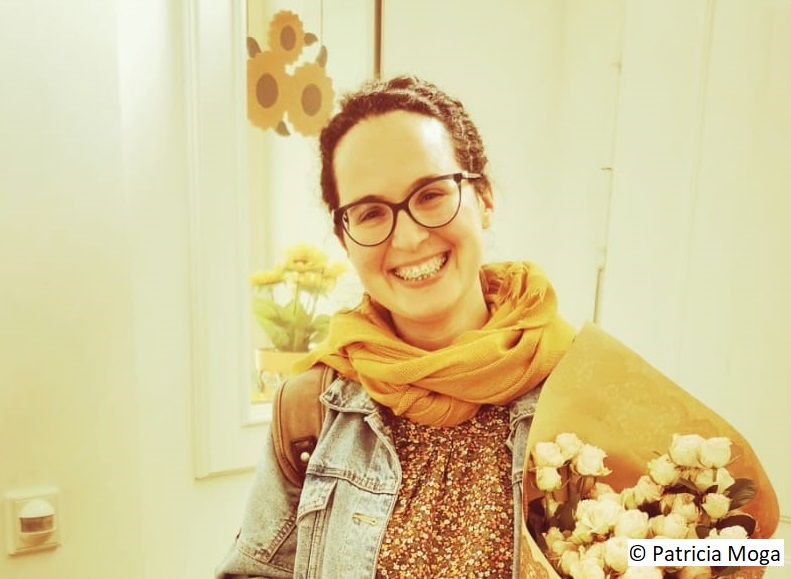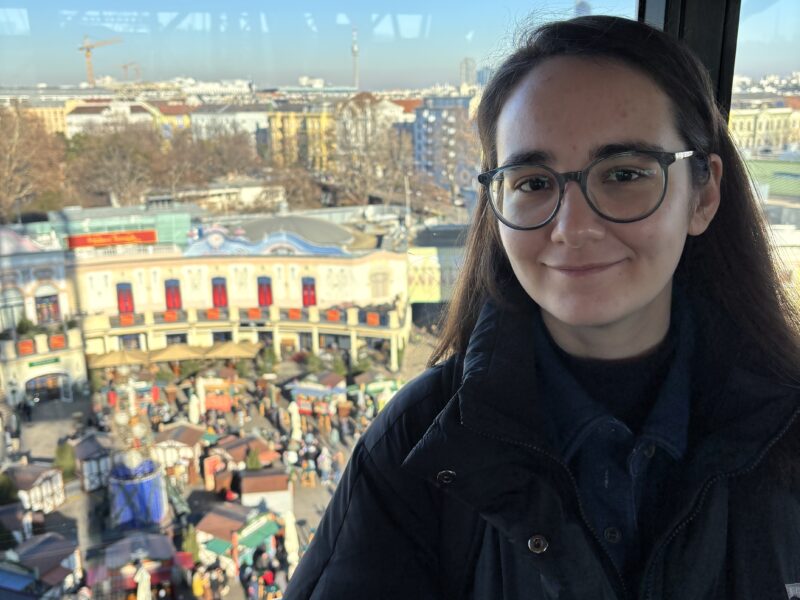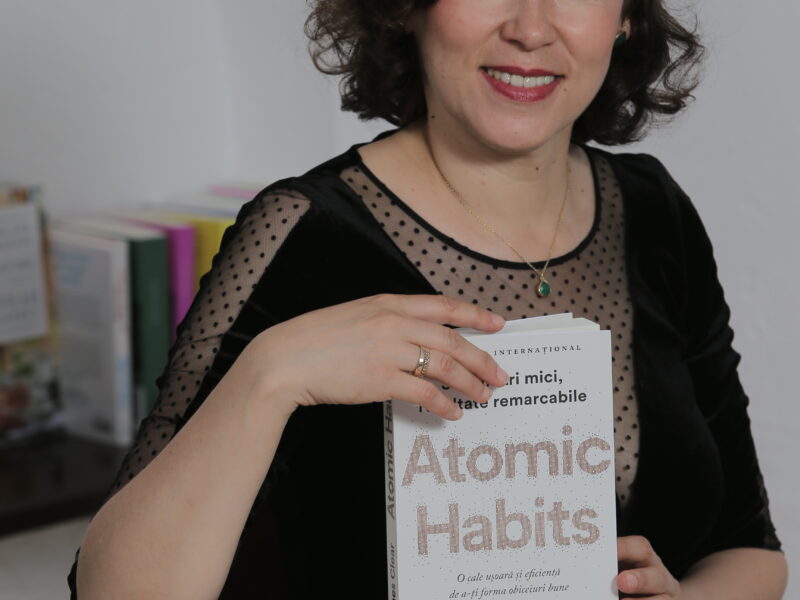Anca-Maria Pănoiu is editor-in-chief at Curtea Veche Publishing and a translator from English and French, with a keen eye for good literature and beautiful books. She studied communication, cultural anthropology and image, winning in 2018 the Grand Prize for the best master's dissertation in humanities at the University of Bucharest Senate’s Awards Gala. She worked as an assistant curator at the Image Archive of the National Museum of the Romanian Peasant and then joined Curtea Veche Publishing where she quickly advanced to the position of editor-in-chief. Since 2021 she’s been a member of the Romanian Association of Literary Translators – ArtLit. If she had a mythical guardian spirit, there’s no doubt both enthusiasm and professionalism would protect Anca, wearing colourful clothes, riding bikes and travelling the world searching for bookshops, music, and coffee.
How did you become a translator and when did your adventure in publishing begin?
My adventure – very well put! – began almost five years ago, at a turning point. It was triggered by a few questions which I think it's fundamental to recognise when they start creeping up, even if they’re really unpleasant and bang your head against the wall: “Who am I?”, “What am I?”, “What am I good at?”. I’d just realised that the PhD all roads seemed to have been leading me to would have been too unfulfilling to be worth the effort, and I was sorely lacking a plan B. It was then when Curtea Veche Publishing happened, literally: it was a moment when all things clicked, everything just fell into place. So began a short but intense period of build-up. First, I was the editorial secretary (one that was very te-rri-fied by Excel reporting), then very quickly I became a copy editor and also started translating from English and French. Within a year of taking up the copy editor's job, I was already in charge of most of the Print-Ready decisions of the publishing house. It's true that I gained some experience in editing academic texts from the Romanian Peasant Museum, but the approach, and especially the pace in the publishing house, are totally different.
Besides, I've always had a thing for books. As a young bookworm, I remember I was wondering how an A4 text could fit on a much smaller page or who writes the texts on the back cover. “How nice it would be if I were one of those people...” To me, they seemed to be some kind of mysterious ethereal silhouettes, working somewhere, in some alternate space, away from the eyes of the profane. Well, now I see every day that it wasn’t like that: we have enough flesh on our bones and just like everybody else, we buzz around using the STB.
You’ve been editor-in-chief at Curtea Veche Publishing for some time now, probably the youngest one around. What does it mean, what does an editor-in-chief do, and what does your day look like?
I remember the flash of horror that went through me when I found out about the promotion and when I realized they’re going to call me something ending with “in-chief” now. It almost made me want to duck out of it. But one thing remains as true now as it was then: at work I consider myself primarily an editor, and the additional role that comes with the job I've held for the past year and a half is to make sure that the work of all the other editors, copy editors, and proof-readers is kept to the highest standards and, if possible, that they still enjoy it. I follow them around, answer their questions, we look for solutions together when I don't know the answer either, give them personalised and detailed feedback, have trainings or meetings where we discuss directly on the text (which is more like an exchange of experience, I have a lot to learn from my colleagues). At the end, I check the new titles and, if all is well, give the OK for printing. And in between everything else, I also find time for projects that I've been growing myself, step by step, since the manuscript stage, as well as a few other little exciting side projects. That's pretty much what my work day is made up of: people, words, dialogue, questions, research... And cuddling books before they go out into the world.
What stages does a book go through before it ends up on your desk?
I'm going to make a biiiig effort not to answer you in just a few pages of small writing 🙂. Let's see if it worked!
Once a book is contracted, the editorial director schedules it into the plan. To give readers the clearest idea, this usually happens about two years before the actual book release on the shelf – that is when we don’t live on the edge and must get a book out in three weeks (thankfully, once in a blue moon). If it's a foreign book, it's submitted to a translator, and if it's written by a Romanian author, then it goes straight to the copy editor.
In both cases, the first stage that the text (translation or manuscript) goes through in the editorial office is the first copy editing and, in my opinion, it’s by far the most complex, because then – as I like to say – the copy editor is wrestling with the forthcoming book. This is the key moment when the most profound and diverse text problems can be solved, from the thorough confrontation with the original, in the case of translations, to the fine-tuning of fact-checking, lexicon, morphology, syntax, style, and so on.
Next comes the pagination, which at us is done by a typesetter, with the help of the graphic designer, then comes a second copy editing, during which we look not only at the text (although, once paginated, you end up seeing things you didn't notice in R1), but also at the layout of the page, at what is called body lettering, line spacing, headers and footers, colons, notes, tables, graphs, captions, the correspondence between text and images, and other technicalities that go into making up the belly of the editorial Leviathan.
Next comes proofreading, which requires a different kind of skimming, with a different kind of attention and sensitivity to lettering and punctuation (and, more recently, with an eye on DOOM 3, which makes all our lives a bit more exciting). Also, around that time, the Graphics department should finish the cover. Then we wait for the Print-Ready which, in our case, is a fairly complex process, the task of an entire team of editors, involving a multi-stage reading that integrates all the stages up to that point, without narrowing down to any particular one.
After each of these steps, the file is passed to the typesetter which enters the corrections and gives a new “clean” version for the next step. At the end, the book ends up on my desk, as you say – in fact, for the last couple of years, it ends up in my inbox, as a PDF (I miss the hand choreography from when the forthcoming book was just a stack of black and white sheets). I go through it one more time, meticulously and affectionately, adjusting the sleeves and all the small creases, and sometimes I even put a little bow on top, before finally saying “You're all set, you can go!”
For a long time, I didn't really like this whole process of final review, as we call it – I felt it wasn't quenching my professional thirst. Until I realised it was the ideal moment to blow some love and trust, and a little bit of pixie duston the books. That's when I’m all smiles again.
With the impressive portfolio and, I'm thinking, the fast pace of work at Curtea Veche Publishing, how do you manage to keep all the books and all the demands under control?
When you wrote that question, you must have peeked down the keyhole and seen how busy we are, morning till night, sometimes into the wee hours. I think our secret – which for me is more of a source of pride and gratitude – is that we're a really, really cool team. It's not the most elegant word, but it's the most accurate. We've bonded friendships over time at work, we know each other's joys, sorrows, children, grandchildren, and living rooms, we understand each other's humour (not always the most explicit, nor the most orthodox), our heartstrings (so we know how to pull them) and sensitive spots (so we know how to avoid them), we know each other's characters, when angry or when we’re all grabbing a beer (with the Obor's mici and mustard all overfor a complete intellectual delight), we talk a lot, we advise each other, we learn from each other, we laugh our heads off, and above all, we work with love.
And the glue that holds together this almost unreal friendship is, for the last four years or so, a person who has understood better than anyone else that, in order to really lead a team, you have to know how to devote yourself unconditionally; her name is Cristina Drăgulin, she's the editorial director, her typical day is forty-eight hours long (when it's not sixty) and, on top of everything else, she has the gift of keeping all the reports, deadlines and schedules in line as if there were eight wild horses hitched to the same carriage. In fact, when she has to, she juggles them like a fakir.
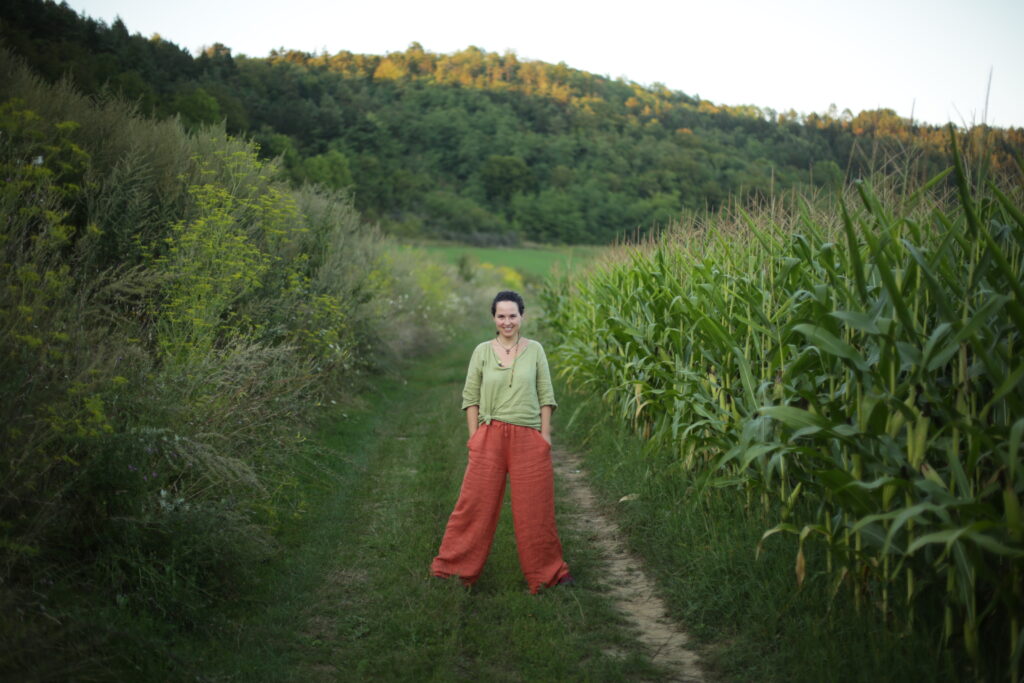
I imagine the joy of giving the final OK to send a book to print is as great as finding a book out in the big world, submitting it for publication, getting it accepted and starting its epic journey in your publishing house. Do you find time for scouting too? What are the books that make your editorial taste buds tingle and what tricks do you have up your sleeve to get your colleagues on board?
You really figure me out with this taste-related metaphor because every time I discover something, I talk to my colleagues about how tasty a particular book is, how delicious, nourishing, dense, and so on. When I really, really love a book, I resort to public confessions: I tell them I've irrevocably fallen in love. Then no one can resist (me), so I include it in our portfolio.
Back to scouting: it's not my main job and I often have too little time and energy left to scour the international publishing world to my heart's content, but even so, I try to keep an eye on a few important sources. I follow Publishers Weekly, Kirkus Reviews, the international literature magazine dedicated to translations Asymptote, the Penguin Random House newsletter, the Shelf Awarenessplatform, Canada's professional publishers' platform The Editorsʼ Weekly, Maria Popova's amazingly inventive newsletter The Marginalian (formerly Brain Pickings), the newsletter of the Bordeaux Bookshop Mollat, and I try not to lose sight of what we get from agents via the Copyright department. That's where I get my ideas from, some of them even were materialised in (future) releases at Curtea Veche Publishing: two titles by the French sociologist Edgar Morin, a book on the phenomenology of waiting by Harold Schweizer who was born in Switzerland and immigrated to US, a book of universal reference on creativity by Mihály Csíkszentmihályi, another one on the creator of the Rubik's cube, which you sold yourself... 🙂 I don't have a recipe for books that draw me in, but I generally can't resist a fresh topic, possibly related to social sciences or arts, a clever concept or a visionary title, and I generally get very curious when I get my hands on life stories. I do, however, have an anti-recipe: I use to joke with colleagues that I don't have much taste for bestsellers... I rather like to rummage through the nooks and crannies for hidden gems and pull them out.
To what extent has your age, the fact that you may have been younger than your colleagues, influenced your relationship with them since you took over as editor-in-chief? Was it an advantage or an obstacle?
Anyone who knows me a little better might laugh a bit, but I still can't help myself, I'll just rephrase our author Brené Brown: What stands in the way becomes the way.
I’d sum up my experience by saying that I’ve had an extraordinary privilege: I’m perfectly aware that I got in my position very early and that it was somehow inevitable that I wouldn’t be set up, in the publishing house's organisation chart, above colleagues older than me. But after a certain initial awkwardness, in which I may have fumbled with finding the right tone, things fell into place when colleagues understood that it was just a hierarchical convention, beyond which there was nothing but the desire to get the books out in the best form they could possibly get. And if along the way I can absorb from them as much as I can from what they’ve accumulated over years in the field – some even over decades – then all the better. Anyway, they often call me “Ancuțule.”
When we met, you said that beyond the actual work with the text, with the books, it also brings you joy the opportunity to pass on what you’ve learned as an editor to colleagues and interested parties. Where did you learn all this from?
Most of what I know is “stealable”. Simply put, I’m stealing the craft. Tenaciously and curiously, I constantly buzz my colleagues and ask them lots of questions about everything concerning the book’s journey, especially outside of my direct area of responsibility, the editorial office: from copyright (“Dana, how do you run an auction on a title? Doesthe option overlap fully or only partially with the pre-emption?”) to production (“Cami, what’s a big? How do you put the plates on the press, why do you need multiples of 8/16/32, what's the optimal thickness for this kind of book cover?”), sales, and even storage (“Daniel, what are those pallets?”). It's a thirst that's very hard to quench and one that I don't think I'll ever quite get over – notice to those who may have hoped to get rid of me at some point. Then, I have the amazing opportunity to work with people who really have and still seem to have the patience to reply to me. It's also true that I learn very quickly, very easily: when I'm interested in something, you don't have to tell me twice what to do. I also discovered many things on my own, through research and logical deduction. And, very important, through mistakes – perhaps the hardest lesson because I hadn't learned at the right time that it's ok to make mistakes.
And to pass on craft I think is the only honest direction in which all of the above can go. After all that trouble, what would it be for me to stick myself to the treasure and not share anything?! But it's a joy that, again, I think tests the patience of colleagues, because when I get excited, I talk a lot. It’s a good thing that learning is never one-way... That means I still get a chance, from time to time, to practice silence. 🙂
You’re in charge of a column on carticheie.ro, a platform initiated by Curtea Veche Publishing – “Recommendations from the people behind the books” – where editors, publishers, and translators make monthly top lists of their favourite books from the publishing house's portfolio. How did this idea come about and how did you manage to put it into practice?
The idea came at a time when I had already been working from home for almost two years, during the pandemic, when a Zoom meeting was organised between the editorial and social media teams. That's when we realised: uno – in the meantime, new faces had appeared that we didn't know about (y compris, neither did they about us), and secundo – we weren't collaborating interdepartmentally as much as we could. And because at Curtea Veche Publishing we had the chance to learn an essential lesson – as important as books are, people are far more important –, we came up with this idea to bring to light those who usually stay hidden behind the monthly releases. At first, for a couple of months, I was the only one writing about books – to set an example and prove them there’s nothing to worry about –, then I started inviting my colleagues: at first two, then three, then four...
How does it happen, precisely? From each monthly editorial plan, I make a deeply subjective selection, i.e. one that doesn't necessarily take into account either the international charts or awards, but rather what I would grab first and foremost off a shelf. Then I start pestering my colleagues to write short texts, however playful and original, about the books they've worked on, to introduce themselves in a paragraph (“Oh, I don't know what to say about myself!”) and to send me their photo (“And a photo?!”). I mean, to come out in the open. I put them all together, edit them, our lovely Dora from Graphics makes a banner with our faces and the covers of the designated books, the social media team posts it and then, you likeit and shareit. And if we encourage you to read them too, then we've done a really great job!
You said at some point that translation means to you “diving into the substance of language, finding the right rhythm, rounding the edges of the word, adding and deleting until the folds of the text settle on the meaning in a way that leans towards perfection”. Do you have a ritual to help you in this sense and how do you manage to find the time for these finishing touches, given that, as Ioana Văcărescu said in the interview we did together, “time is a great enemy of the book industry”?
Another question that would take me a good few pages to answer to my heart's desire! I'll start with the end: I don't really believe in this enemies thing. Objectively, I know they exist – but somewhere, far, far away, in their bubble and not on my asteroid. Even less so when it comes to time, which for me, means less of this conventional partition into days, hours, minutes, and seconds – which only helps us to somehow speak the same language – and more a kind of amniotic fluid in which we wait and bake ourselves, a containing place that expands or shrinks according to an ever-varying criteria.
Back to deadlines, because that's probably what we mean when we talk about the “book industry”, the process never changes: we’ve had delays and postponements over the years that have been adjusted along the way, just as we've had projects that we've finished much faster than we originally estimated. However, when you have someone like Cristina [[Drăgulin, editorial director] around, who keeps all the planning under control in an iron fist wrapped in lace, deadlines and time can become very manageable aspects.
And when it comes to literary translation, things aren’t much different. Working to the norm has long been a desideratum, it seemed to me that this is what a professional attitude would consist of. Until I realised that the passion was simply too great to work quietly, bookishly, bit by bit. If a text seduces me, I throw myself at it with a thirst, but also with a jeweller's painstaking skill, and the time remains somewhere behind. Night is generally a good friend. Or tender mornings, with strong coffee and lots of chirping. On some books I drank red wine while translating and I was already hearing in my mind what I was supposed to write. No worries, they were revised before getting published. On daylight.
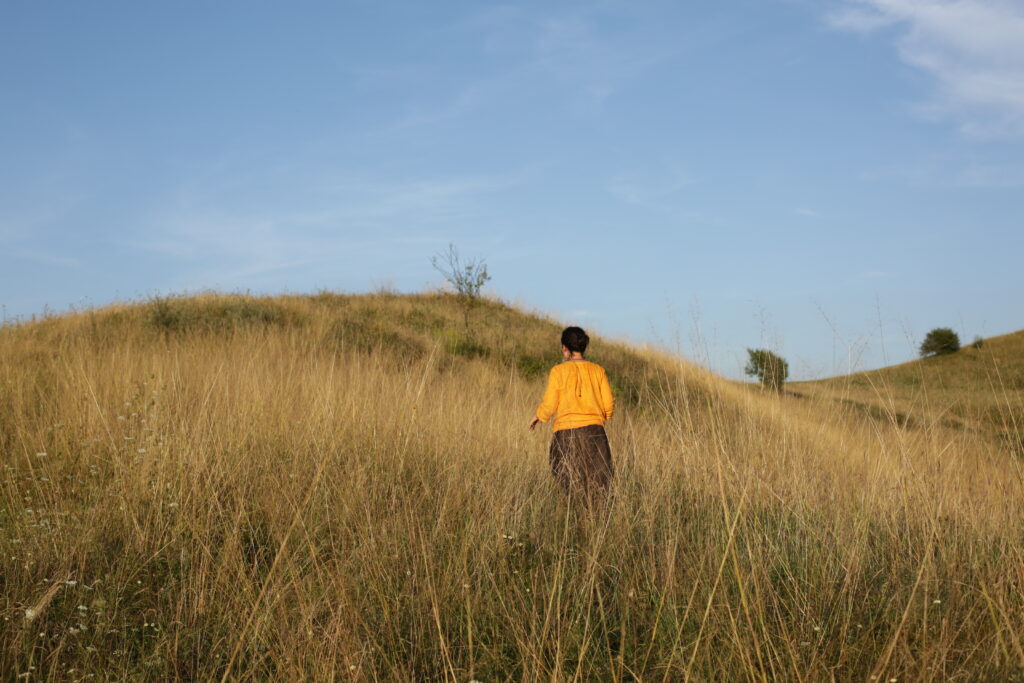
How’s the interaction with the copy-editors who have worked on your translations so far? Have you had phrases or words to negotiate, how do you find the middle ground?
I don't say it proudly at all, but I can't sweep it under the rug either: with the books I translate I'm definitely a freak control. That means I’m very close to them, at every stage of the editing process, and I don't let go until I'm completely happy with the result (for example, I once rejected a cover because it didn't seem to go with the content at all). But I’m pretty lucky – #1: so far, I’ve only translated for Curtea Veche Publishing, which means that I’ve dealt with copy-editors who know me very well and understand that it's not pride that keeps me in the fight but the desire to do things as well as possible, because I do have high demands from myself; #2: I’m very open to discussion and always happy when an idea better than mine comes up.
I'm very curious if it would work for me with lesser-known people. Would I find a worthy opponent?
What about the other way around? How have your relationships with the translators of the books you’ve copy-edited gone? Have there been situations where editing has turned into retranslation and what does one do in these cases?
I often notice that we fear each other as if we are not writing, from different ends, the same story. But in terms of my relationship with the translators of the books I've copy edited, I've made a key discovery: there's no editorial secret for which I'm not primarily grateful to my mother. And that's simply because during various collaborations with translators, the principles I've always been guided by are exactly the same as the ones I learned during my childhood. I address translators with openness and respect, I show them that they’re key partners all the way from the manuscript to the bookshelves, but I also reserve the right to debate their solutions, I show them where and how I intervene on their version, I ask questions, we discuss, we tell stories, I keep them constantly updated on the project’s status, I congratulate them when the book comes out and... we salute each other on International Translator's Day. When I work with someone, I try to get to know them beyond the conventionality that our working relationship constrains us to. And I encourage my colleagues to do the same.
This is how I made beautiful and strong connections, starting from cordial admiration to mentorship and even friendship, with translators such as the late Marius Tabacu, the delicate and witty Mircea Dan Duță, the extremely nuanced and precise Francisko Kocsis. (And this is only about translations in which I did not know the source language!) Or Luana Schidu, who embodies my highest model of a literary translator – so high that even after almost a year, since we met face to face, I can't believe that she’s my colleague and that she gives me her trust and friendship every day.
Naturally, the opposite also happened – you can't call yourself an copy editor if it didn’t happen to you at least once in your life (in fact, it happens to you many times). I was just starting out, working on a poor translation, which also came in bits and with long delays. A Brand Minds conference was very close, at which the author was to be present, and that prevented us from using the contractual clause that would normally have allowed us to break the deal with the translator, so we had to work again on the text from scratch, on fast forward. The book came out on time, in honourable conditions, and when I could finally sigh of relief, I wrote a feedback email in which I gave the translator a detailed summary of all the problems of language, style and even basic grammar that I had to fix and whose occurrence we will not accept in the future (I really did underline that). I remember that, although her performance had been far below requirements, she responded by thanking me for the kind feedback. Which made me think of two things: one – although I didn't pat her on the head at all, quite the contrary, I probably did something right in my email; two – maybe she really is a good girl after all. But a good girl who no longer translates for us.
From all the translations so far, has there been a word that has haunted you nights and days because you just couldn’t find it or, perhaps on the contrary, it came out more beautifully and fittingly than you expected?
In my last answer, I mentioned Luana Schidu and I'll start this one with her too, because her translation of Guzel Iahina – Zuleikha Opens Her Eyes – is linked to a night when I opened and closed my laptop three times, because as I was reading idly late at night, I had found words that fitted wonderfully into the translation I was working on at the time – that on daylight, I had been searching through dictionaries and different corners of my mind in vain. It was so late, and I was so tired, that now I can't even remember what the words were, but if you ever find in one of my translations foculeandru, you should know that it's a word made up by Luana. Only, what do you know, you won't find it – she made it up especially when she translated a book that international critics said was untranslatable: Tatiana Tolstaya's The Slynx . So I can't steal it from her, though I will remain eternally in love with that word.
Otherwise, the translator's days are themselves a series of such wanderings through cramped spaces, stubbornness, wrestling with the text, followed by moments of eureka! whose taste reminds you, if it was needed, why you're at your desk and not in bed, even though it's well past midnight.
You were the first editor-translator to join ArtLit – the Romanian Association of Literary Translators. What are your expectations from this membership and what are the implications of being not only a translator but also working in a publishing house, knowing both sides of the fence?
Being a member of ArtLit for a year now has helped me to realise that what I initially considered an ungracious position is actually a privilege. If I wrote above that I noticed a certain doubt towards the relationship between copy editors and translators, the gap seems even greater between publishers and translators.
But I think that only happens in their natural habitat, when they sit locked in their ivory towers and stress out. Because as soon as we sit at the same table and exchange experiences, ask questions and seek answers together – communicate, that is – we remember not only that we’re human, but that we can try and find a middle ground. For example, as a translator, you discover that publishers don't pay a much lower rate than the European average because they want to line their own pockets, but because they have to anticipate and balance a lot of costs in the production chain, which are not so visible to the translator; but they would be willing to raise the price, perhaps, if the performance was excellent and the professional relationship long-lasting, on which he could still rely if necessary. Or, as a publisher, you find out that translators hold firm to their rates and contractual conditions not because they have unjustified demands, but rather because they have to support themselves from a wonderful job, which in Romania rarely pays the bills, or because they work weekends or nights after their main job is over. Of course, I'm talking here about scenarios where mutual respect works and I'm not talking about deviations, on both sides, from common sense. Incidentally, I've come across plenty of examples of healthy publisher-translator relationships and I think it's a model we need to extend.
Therefore, I expect that in time, through the attitude that ArtLit proposes and cultivates in our domain, we will contribute to the normalization of an environment of trust and transparency on both sides of the translation contract. And to remind ourselves more often that we are, in fact, in the same boat.
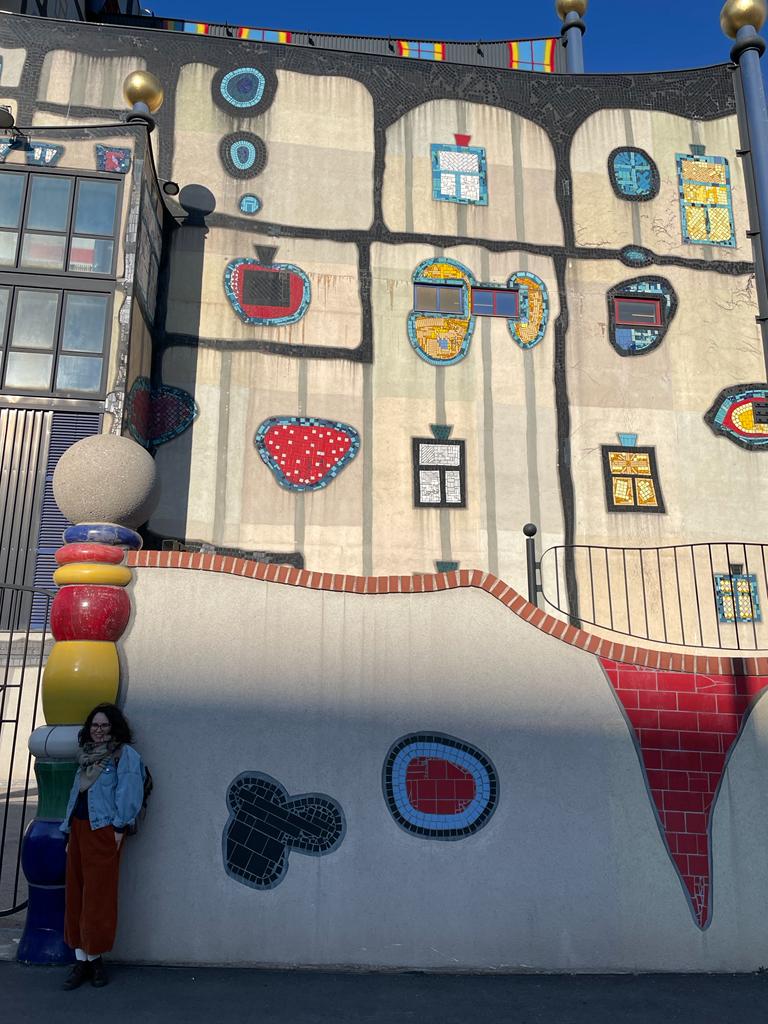
You recently came back from Vienna, where you obtained a two-month Paul Celan Translation Scholarship offered by the Institut für die Wissenschaften vom Menschen (Institute for Human Sciences). How did you get this “extended translation stay”, what you call it, how did it work?
My beautiful “Viennese break” was from the very beginning under the sign of what is called serendipity. I randomly found out about the scholarship, from a former colleague whom I met on the plane, when I least expected it. Months of waiting followed – waiting the open calls(it's a rare scholarship), for me to find the right book, for me to convince the publisher to purchase it and sign the rights agreement with the owners, for me to put together my convoluted application... When I submitted it, I took off a bit, but two months later I crashed with a thud because I was rejected. Naturally, I’d started making all sorts of lists, dreams and scenarios in my head. But ten months later, when no one was expecting it (by the way, I had proposed a book about waiting), I was contacted by the program director in Vienna, who informed me that “an unforeseen situation had arisen in the awarding of scholarships”: someone had dropped out at the last minute; wouldn't I want to come to Vienna? And I'd better come soon, because they have the stay already planned.
Of course I went, although it meant madly rescheduling in a few days accommodations, planes, and an extended leave of absence, because I was supposed to be in France at that very time on another scholarship. So, after a very difficult year on many levels, I took a two-month break from publishing, a sort of existential vacation in which I dedicated myself to literary translation and to discovering a city that, though it seemed icy at first, ended up getting under my skin. It's what most of the Scrisori pe genunchi (Writing in my lap) from that period are about. Moreover, at the Institute for Human Sciences in Vienna I discovered the amazing and splendid culture of dialogue (regardless of age, field, or continent) and an organisation dedicated, in the most professional manner, to building bridges between the Western and Eastern Europe, so that knowledge could become a common language.
Also in Vienna I made some friendships for which I can never be grateful enough.
After translations and walks on the banks of the Viennese Danube, another “translation break” followed, this time in France. What's its story?
There was a story about Vienna and there’s a story about this one too. As always. I also found out about the scholarships offered by the Centre National du Livre by chance, but I was once again rejected. But fail again, fail better is a Beckett saying that for me seems to have quite a bit of wit in it. I tried again and I got the grant, proposing a translation of the most recent autobiographical work by Edgar Morin, a landmark in French sociology, who will be 101 on 8 July 2022. I was supposed to leave in the spring – with tickets booked and accommodation reserved – but the journey took me to Vienna. From there I was supposed to land directly in France – where I was for a week, so much that I was needed back home on an inexpressibly more important front. Now, I've set my sights on returning to France in the autumn and hunting the South, with Arles, Avignon, Aix-en-Provence, and Montpellier. Let's see how the story goes. One thing's for sure: if I get there, I'll send postcards. I can't help myself.
“Virtuosos can't play together if they lack elegance,” you said of musicians, inspired by a cello concert in Vienna. From your experience so far, what shouldn’t people who work together in this world of books lack and how can they acquire it?
Elegance 🙂. It's curious that this very phrase caught your attention, because when I wrote it, it never occurred to me for a moment that it could be specifically translated into the publishing world. But you're right: I think that beyond the good knowledge of the craft and experience, what shouldn’t be missing from professional relationships – in fact, from any relationship between people – is this very thing, elegance. Don't put the other person down, but, on the contrary, put them up whenever you have the opportunity. Don't stress them out, don't make them feel bad, don't burden them, don't feel a trace of satisfaction if you give them the cold shoulder, although it happens. Approach them full of curiosity, wanting to acquire what they know, how they think, what they feel. Have a sense of humour. Criticise with kindness, with generosity, and keep to yourself the words you feel like saying in the heat of the moment. Gracefully make errors and correct them thoroughly. The list could go on, but look, the sun is rising and I have three more questions to answer...
Lest I forget: elegance is acquired only if you want it.
What were the moments that made you smile broadly in your experience as a translator so far? What about as an editor?
Here, this interview, which I've been answering for hours now instead of sleeping on the night train to Cluj for TIFF, makes me smile. For the past week or so, I've been smiling at the morning emails from Silvia Năstasie, an excellent translator, but who was too shy to come out and is now all sparkles. It generally makes me smile the welcome and kind words from collaborators – translators, authors, illustrators – who, working with me on a book, felt that together we were building more than a book. It was the coffee I had with Mihai Pleșu that made me smile (and laugh out loud!) and the dedication on my copy of Texte cu vedere la stradă (Texts overlooking the street), Cătălina Bucur's loooong dedication on Bebe, hai la joacă! (Baby, let’s play!), the bottle of targets and the long birthday card I received from Cristiana Petre, author of the ongoing series Tiny Rockers, with the original framed illustration, from Întâmplări mărunte cu pictori mari (Little things with big painters) on which Roxana Iacoban wrote me that I’d fulfilled a dream, the interview I took on Zoom with Fabrice Midal that was like a glass of frizzante, the little cakes from Zexe, followed by long conversations, with Daniela Ulieriu, co-author of the novel Quartet... and the list stays open.
As a translator, I get really excited when I feel the musicality of a phrase and have to remodel it into Romanian.
When you're not translating nor editing books, you're taming words, images, and ideas into travel letters, reportage, portraits, book reviews, music, film, and theatre. How do the latter make their way and how does writing and the eye of translator and copy editor coexist?
How do they make their way? There's an English expression that I like very much and it's very accurate here: to elbow your way . I think that's how they make their way...
Now, all joking aside, my writing has had a long, years-long block, that was overcome by giving a rest to my mind during the Viennese period, combined with the gentle tenacity of Răzvan Penescu, the creator of the LiterNet platform, who is willing to wait for my texts for years if need it (but reminds me about them periodically). I usually write when I can’t keep something inside me anymore, and yes, most of the time it's an aesthetic emotion – hence so many reviews and no more of that stiff writing 🙂. And again you can feel it when you ask me about the marriage between writing and the editor's eye, because it mostly catches sparks. When you're dissecting other people's texts for hours and hours every day, there's a very strong tendency to self-edit that doesn't take long to turn into the worst block ever. The good news is that I've started to like giving up lately. Here's how I playfully counterbalance the editorial morgue.
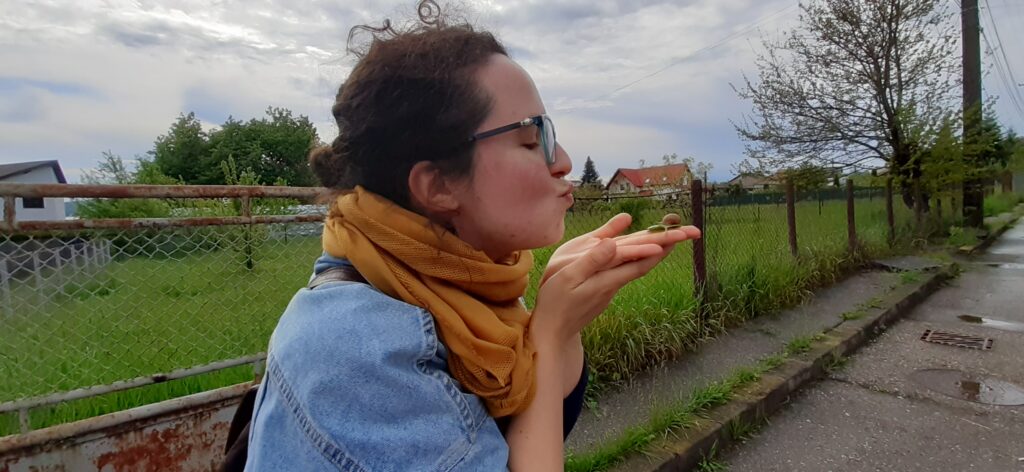
Strong coffee, chic bookshops, colourful clothes, and jazz are some of the pleasures you indulge in. What's the winning combination of all these and what would be the cherry on top??
I have several scenarios. In Bordeaux, a long morning (into the afternoon, if I may!) in the giant Mollat bookshop, followed by coffee and some local indulgence in Place Saint-Pierre, then a short trip to Machine à Lire, topped off in the evening with strolls in the narrow streets around Place de la Bourse and Hôtel de Ville (where I can't decide between so many colourful clothes, not to mention the vintage shop Victoire behind the university)..
If I'm in Paris, I'm probably staying in Shakespeare & Co. and go up to the first floor to listen to the girl playing the piano, read by the window and play with their cat, then hunt down some limited edition macarons (maybe one day I'll get lucky and catch the violet ones!) ) and eat them in Tuilleries with a flat white on the side.
If I'm in Vienna, I go to the KHM first, to gaze at Bruegel and especially Vermeer, then walk a bit to the Fenster and get a coffee in a cone, stop to buy some of the best artisanal sweets from the candy shop, with a family history of forty years, from Mr Rosenauer, who, though sixty himself, blushes like a teenager when I praise his delicacies, then I go back to enjoy them in the Volksgarten on the grass, with a book of course. And I think I'll pop into Teutchler's too, where, totally involuntarily, some vintage vinyl will find me.
If I'm in Lisbon, I start with coffee in Amalia Rodrigues' garden, not before taking a tour of her marvellous memorial house. Then I lose myself in Bertrand, said to be the oldest bookshop in the world and looking like a catacomb walled with books. I drink coffee across the road at the Brasileiro, where Fernando Pessoa once drank his. And in the evening, I go to listen to fado a stone's throw away, at Tasca do Chico, a not exactly touristy little shop where the owner is, by turns, a doorman and a fado player.
If I'm in Bucharest, I'll probably linger among the cushions at Kyralina, go to Verona, eat ice cream from Sweetology (I think the Lebanese are no longer there, right?), from French Revolution, or Mara Mura, and then I'm sure I'll find something else to do.
So these are some of my crushes so far. I can't wait to get my hands on more. Oh, and the cherry on top – if there’s no traffic at all, then I’m brave enough to get on my bike.
[The photos are part of Anca Pănoiu's archive.] [Translated into English by Ana-Maria Mihai.]

